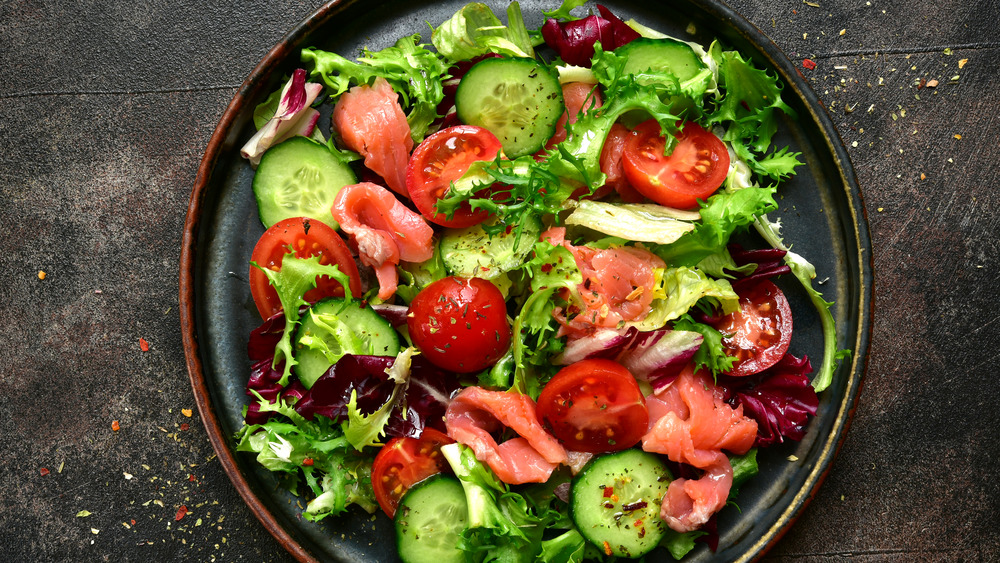What Is The Pegan Diet?
If you're wondering what the Pegan diet is, you're not alone: This relatively new eating style is a hybrid of a vegan lifestyle and a Paleo diet, though it isn't exactly a Paleo diet that eliminates animal products entirely. Rather, it's a Paleo-style diet that focuses less on animal-based foods and more on plant-based options. The term "Pegan" was coined by Dr. Mark Hyman back in 2014, but it's recently skyrocketed in popularity (via the Cleveland Clinic).
A Paleo diet seeks to emulate how our Paleolithic ancestors (hunters and gatherers) ate thousands of years ago, and typically is a higher fat and protein diet with lower carbohydrate intake. A Pegan diet, on the other hand, is — as Hyman explained in a podcast with the Cleveland Clinic — when "you want to downsize your meat, but you want to eat grains and beans, but not like, unlimited amounts. You want to eat mostly vegetables, good fats, nuts, and seeds, and stay away from all the starch and sugary stuff."
Essentially, your plate should be 75 percent plant-based with fruits and vegetables, with meat used as a topping rather than the primary focus of the meal. Grains, sugar, refined oils, legumes (except for lentils), and processed foods, in general, should be skipped (via Good Housekeeping).
Are there any downsides to going Pegan?
The hardest part of adopting a Pegan diet is staying inside of the framework when eating at restaurants or at parties. Similar to a Paleo or a vegan diet, the rules can be tough to follow when you're not in charge of the cooking process. The restrictions can be daunting, and following all of the guidelines can lead to you being the pickiest guest at a dinner party.
"In reality, most of these restrictions are unnecessary and frankly, quite costly and time-consuming," registered dietitian Jaclyn London told Good Housekeeping. The expense can come from the Pegan recommendation of choosing grass-fed organic meat versus more conventionally processed options (via Healthline).
Still, the general aims of the Pegan diet — namely eating more vegetables and fruits, while using real whole food options like meat and fish as side dishes to help round out a meal — are good starting points for anyone hoping to eat healthier (via Harvard Health Publishing).


